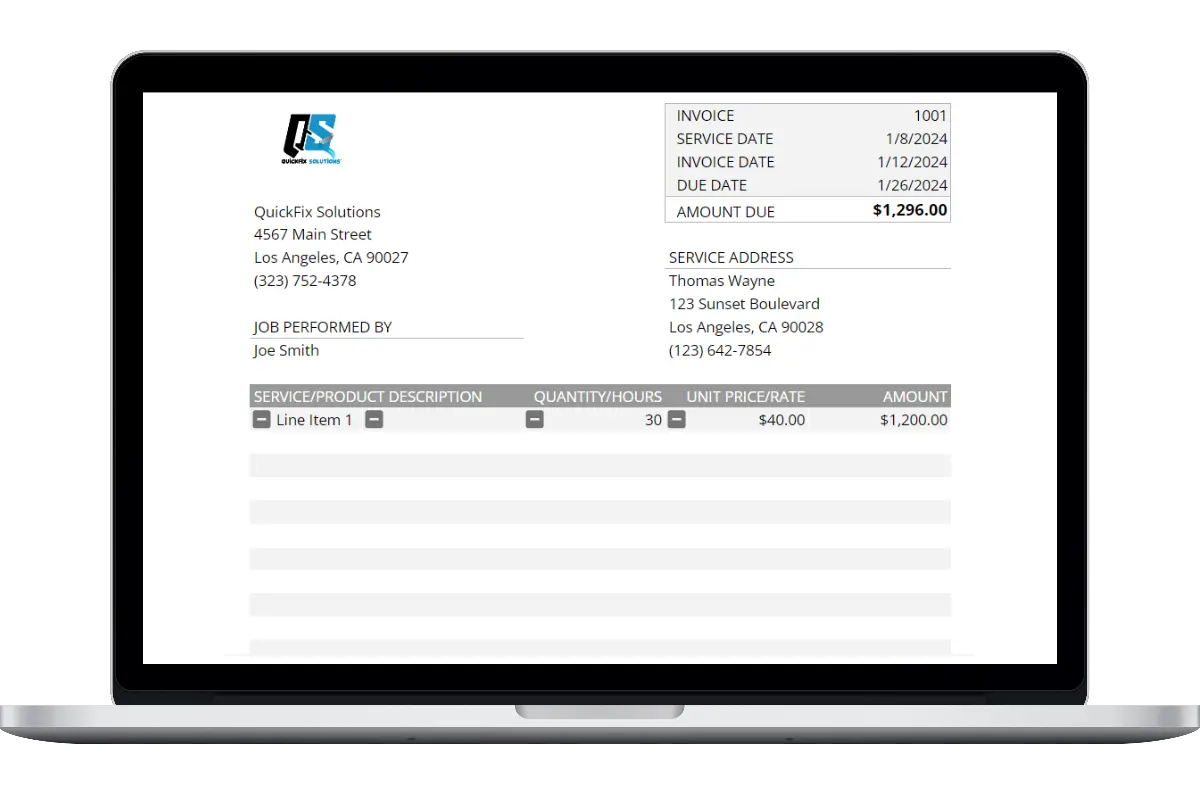
HVAC technicians and property owners alike face the challenge of figuring out different aspects of the job. A CFM calculation formula in HVAC can go a long way to determining the required airflow rate for a room based on cubic feet per minute (CFM). Knowing the formula can become a useful tool for technicians and HVAC business owners and Housecall Pro is here to help.
What is CFM?
CFM is cubic feet per minute. This measurement calculates the volume of air that flows through a particular space within a minute. In the HVAC world, CFM is critical for determining the capacity and size of a heat pump, furnace, or air conditioner.
Why is it Important to Understand CFM?
The simple fact of the matter is that CFM rating in a particular room can have an impact on things like air quality and comfort. Moreover, it can help keep an area fresher. The process is straightforward so long as you have a CFM calculation formula in HVAC.
As it turns out, there are three primary reasons why understanding CFM is so important. Before long, you will work to make sure that you have the right CFM calculation formula in HVAC to get proper measurements.
Reduce Humidity
Humidity can be a tough thing to handle. The air feels heavier, wetter, and a lot less comfortable. Depending on your location, humidity can be quite severe. Better airflow and more ACH will help to reduce humidity, especially in bathrooms where moisture accumulates.
Installing ventilation fans that have higher CFM ratings will work to remove humidity by pulling out the humid, warm air from the room. Even in bathrooms that don’t have windows, the right fan can do the job.
Improved Comfort
Another aspect of humidity to consider is how uncomfortable it can be. The air weighs on you, feels heavier, and is more difficult to wade through. By introducing greater airflow and a higher ACH, the room can be made not only more comfortable but cooler as well.
Generally speaking, rooms that feel a bit fresher (more on that later) have improved air circulation. The stickiness of humid air is also removed, making it far cooler and more comfortable than would have been possible otherwise.
Fresher, Dryer Rooms
Perhaps the most underrated aspect of getting CFM right is that it can help keep your spaces dryer and fresher. Why is that important? Persistent moisture can damage surfaces, equipment, and furniture over time. The more sensitive the material, the more likely it is to be damaged by that moisture.
An air conditioner or fan that has been properly rated can help keep moisture out of the room, ensuring a fresher, dryer room. It will keep you more comfortable but also ensure that your valuables aren’t slowly worn down by moisture.
Get In Touch: 858-842-5746
Let us earn your trust
On average, Pros increase monthly revenue generated through Housecall Pro by 50% after their first year.
See plan options and feature breakdown on our pricing page.
How to Calculate CFM for HVAC?
The process of using the CFM calculation formula in HVAC is easier than it might seem. Follow three simple steps and get your calculation in no time (or use Housecall Pro’s free CFM calculator to make life easier):
Step One
In order to determine the calculation of CFM for HVAC, you need to know the volume of the room. This calculation is done in cubic feet. Take that number and multiply it by the recommended ACH, then divide that number by 60 (minutes per hour).
Step Two
Now you need to add in the relevant details in order to get the estimated CFM. These details will include certain metrics like room width, room length, ceiling, height, and air changes per hour.
Step Three
When you have every piece of relevant information, it is time to get an estimate of CFM. Even if you just have the numbers, you can use HVAC software or a CFM calculator to get the formula right. When using a calculator, room area (length x width) and room volume (floor area x height) can be determined automatically for you. Then it is time to run your CFM calculation formula in HVAC.
Air Changes per Hour (ACH) Room Requirements
When it comes to the CFM calculation formula in HVAC, it is imperative to get the ACH requirements right. When you change it even slightly, you will get a different CFM rating. The higher the ACH, the higher the CFM rating you will get. The lower the ACH, the lower the CFM you will get.
If we are using four as the required ACH, we get 134 CFM. If we double it, that rating goes up to 267. When you think about it, the size of the room stays the same, but it is the ACH that has changed. Even if you have two rooms of the same size, having different ACH can create different CFM requirements.
Generally speaking, you can operate within a baseline ACH for different rooms. Basements are 3-4, bedrooms are 5-6, living rooms are 6-8, kitchens are 7-8, and laundry rooms are 8-9. Make sure you have the proper ACH requirements when doing your calculation of CFM for HVAC.
CFM Calculation Formula in HVAC
The CFM calculation formula in HVAC is as follows:
CFM (Airflow) = [(Floor Area x Ceiling Height) x ACH] / 60
The calculation of CFM for HVAC utilizes the length of the room, the width of the room, the height of the ceiling, and air changes per hour. Let’s take a look at an example to see what a CFM calculation formula in HVAC would look like for a room that has a length of 10 feet, width of 6 feet, ceiling height of 10 feet, and ACH of 6:
[(60 x 10) x 6] / 60 = 60 CFM
HVAC CFM Calculator
To make life easier when it comes to calculating CFM, Housecall Pro has you covered. Our free HVAC CFM calculator can help you make quick calculations, making it possible to get back to the job in no time at all. More importantly, your calculations will be accurate, ensuring a job well done.
HVAC technicians have a litany of tools at their disposal. A CFM calculator will become one of the most valuable tools available before long. Don’t waste time trying to figure out the math on your own when you can use a free calculator to get things moving.






